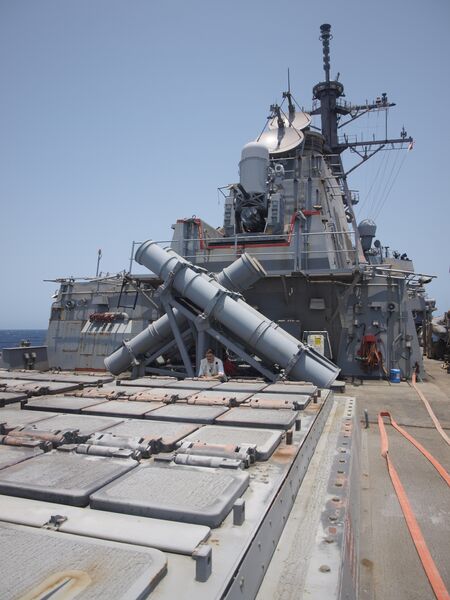
USS Laboon has relied on self-sufficient maintenance in the Red Sea. (Janes/Michael Fabey)
One of the keys to success in Red Sea operations defending against missile and unmanned attacks is self-sufficient maintenance, according to those aboard the guided-missile destroyer USS Laboon (DDG 58), now operating in the region.
“With the heat and the humidity it gets tiring working inside the chamber,” Laboon gunner's mate (GM) 1 Lyrics Ramirez told Janes on 12 Juneduring an interview aboard the ship in the Red Sea. “But you just have to keep chugging along.”
Fire controlman (FC) 1 Mark McKnight, who's in charge of Laboon's Aegis Combat System care, acknowledged the difficulty in maintaining that system in the Red Sea environment, telling Janes, “We just push through all that.”
For more information about the Laboon's Aegis operations in the Red Sea, please seeRadar and tactics modifications help USN forces counter Houthi unmanned threats.
Speaking at a July meeting of the Surface Navy Association Arabian Gulf Chapter, Commander Eric Blomberg, Laboon commanding officer, underscored maintenance self-sufficiency, especially in a combat zone.
Cdr Blomberg noted the need to “foster an environment where the first thing written in a CASREP [casualty report] isn't ‘request onboard tech assist'”, according to a copy of the verified remarks made available to Janes.
“We have requested zero underway onboard tech assists this deployment,” Cdr Blomberg pointed out.
Having been in service for three decades, Laboon is not in better material condition than other DDGs operating in the region, some of which are 20 years younger than Laboon, Cdr Blomberg said. DDG 58's technicians have about the same experience level and training, on average, as those on the other ships, he added.
Looking to read the full article?
Gain unlimited access to Janes news and more...



